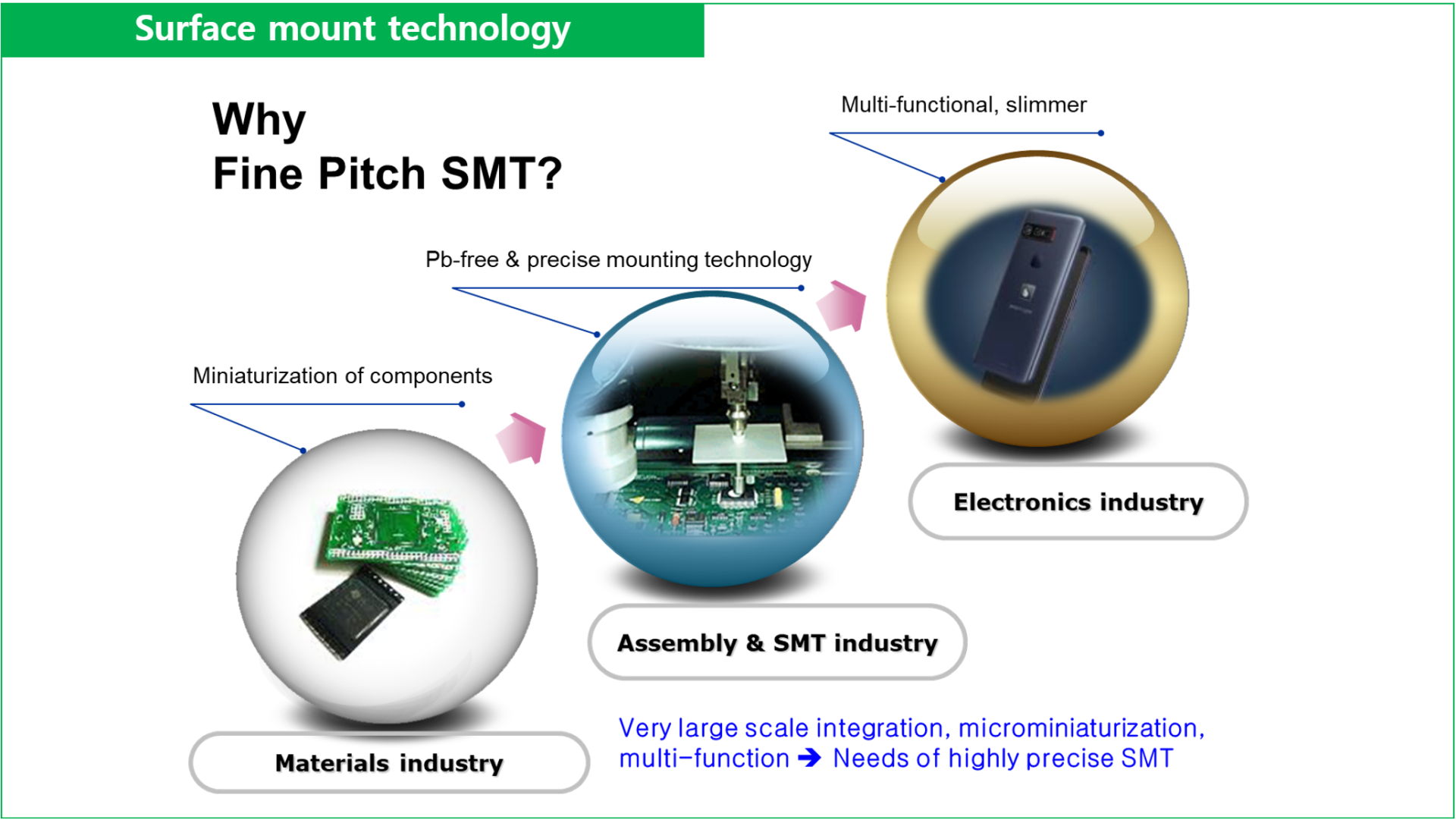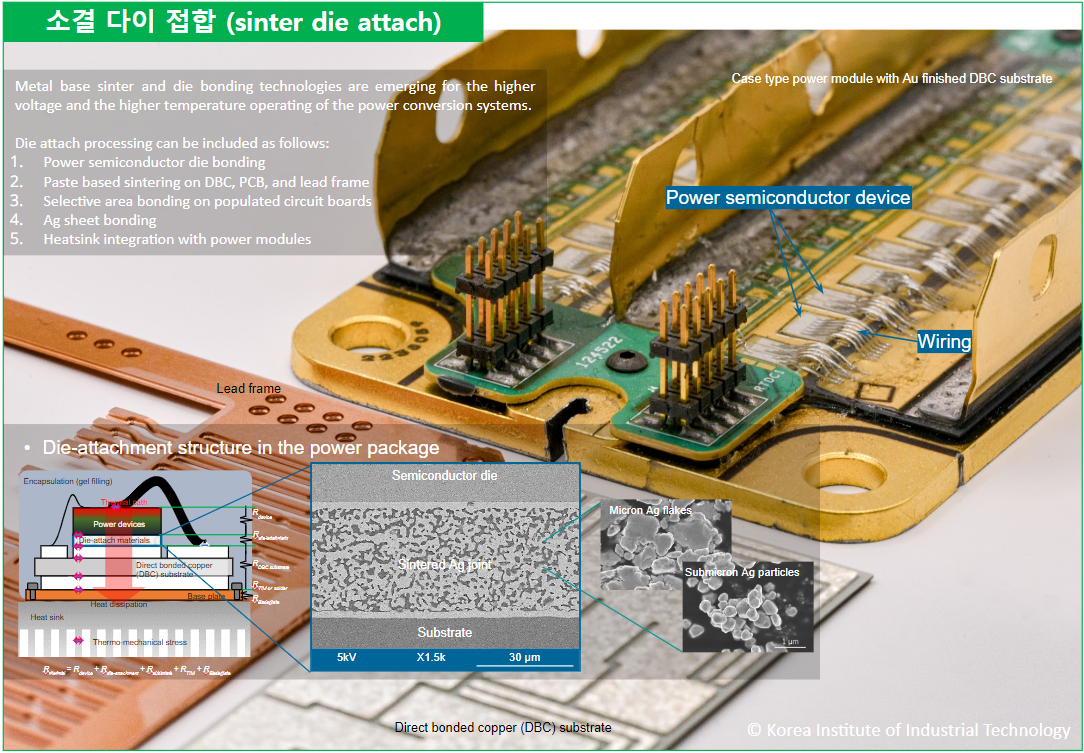Research
Advanced surface mount technology
Surface mount technology
The technology of printing solder paste on a printed circuit board, rapidly placing electronic components, and then electrically and mechanically connecting the components and the pads through reflow soldering.

Introduction
Surface-mount technology (SMT) is basically a component assembly technology related to printed-circuit boards wherein the components are attached and connected on the surface of the board using batch solder-reflow processes. SMT has the advantages of achieving higher packaging densities, higher reliability, and reduced cost than the plated through-hole insertion process. Also, SMT is currently the process most widely used for low-cost, high-production consumer electronic assemblies. However, increasing product complexity, decreasing component size, and using double sided boards have made rework more difficult and the economic reworking of PCB is one of the main problems facing module's manufacturers.
Laser soldering/surface mount
Laser soldering enables rapid soldering within a short timeframe and allows non-contact localized soldering, minimizing heat impact on the surrounding environment during the process

Introduction
Laser soldering is emerging as a technique that minimizes thermal effects by enabling quick soldering, thus addressing the limitations of conventional reflow soldering. Currently, SAC-based solder is widely used in the electrical and electronic fields. As a result, the microstructure of the soldering joint and the Cu-Sn-based intermetallic compound (IMC) formed in the soldering joint have an impact on the characteristics of the solder joint, depending on their shape and thickness. Laser soldering can reduce the rate of IMC formation, warpage, and joint defects caused by long process times in reflow soldering. It also reduces damage to packages and PCB, thereby reducing warpage.
Sinter die attach
This technology bonds power semiconductor devices to heat dissipation and insulating circuit boards without melting them, using the metal paste, making the devices mechanically robust and capable of withstanding high-temperature operation.

Introduction
Sintered die attachment is an emerging technology for the practical application of next-generation power semiconductor devices based on wide band-gap (WBG) semiconductors such as SiC, GaN, and Ga2O3. This technology is emerging in popularity since its implementation in Tesla Model 3, and it is being widely adopted as a practical solution. WBG power semiconductors, based on their excellent electrical and thermal properties, enable high voltage and high-speed switching operations compared to traditional Si semiconductors. Therefore, they are expected to exhibit stable performance even at higher operating temperatures (around 200 °C or higher). The key mechanism of the sintered die attachment technology is to join materials at significantly lower process temperatures (around 300 °C or below) compared to the high melting point (approximately 1000°C) of high-conductivity metals (i.e., Ag and Cu). This allows stable operation of next-generation power semiconductors under high voltage conditions while also achieving effective heat dissipation performance.